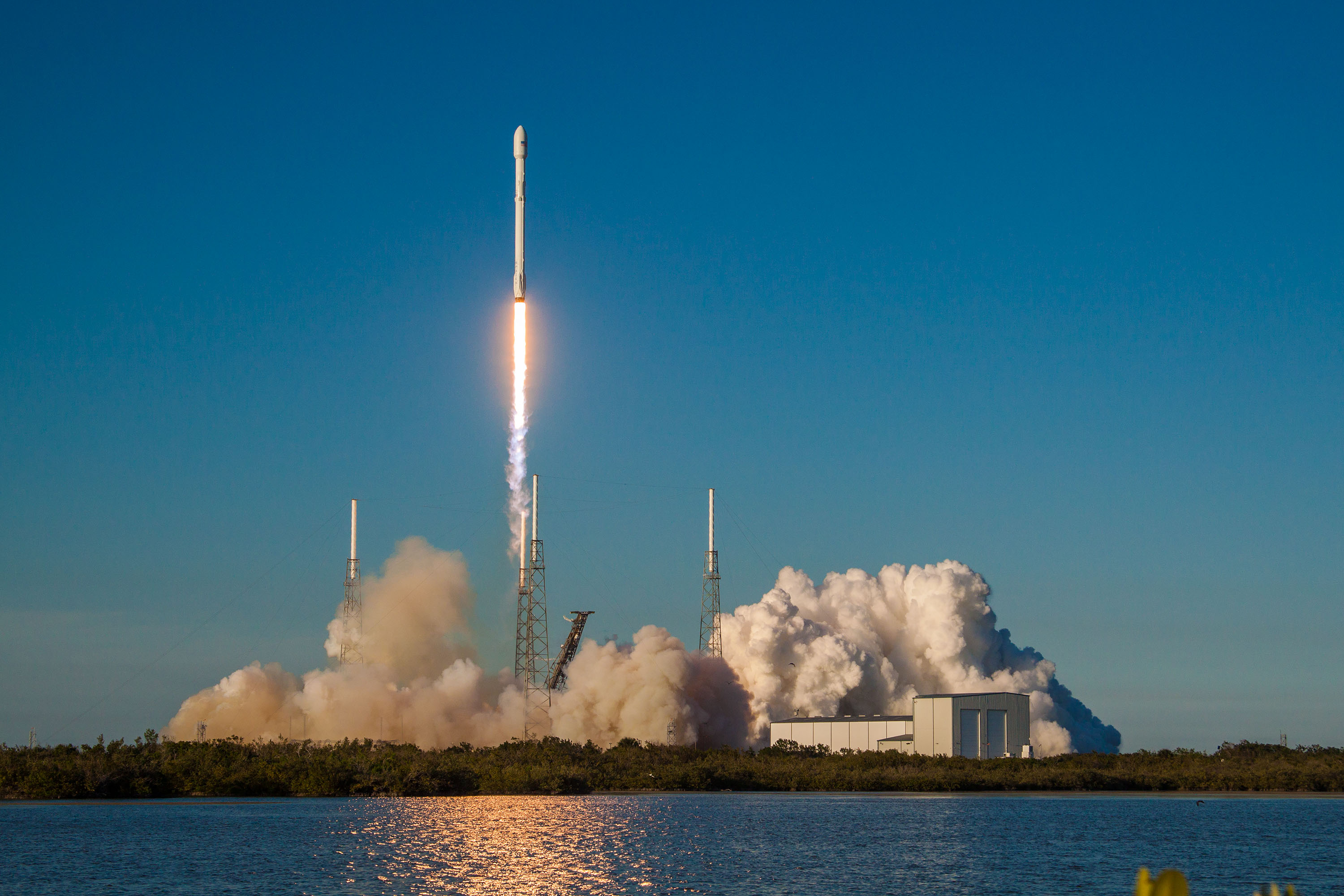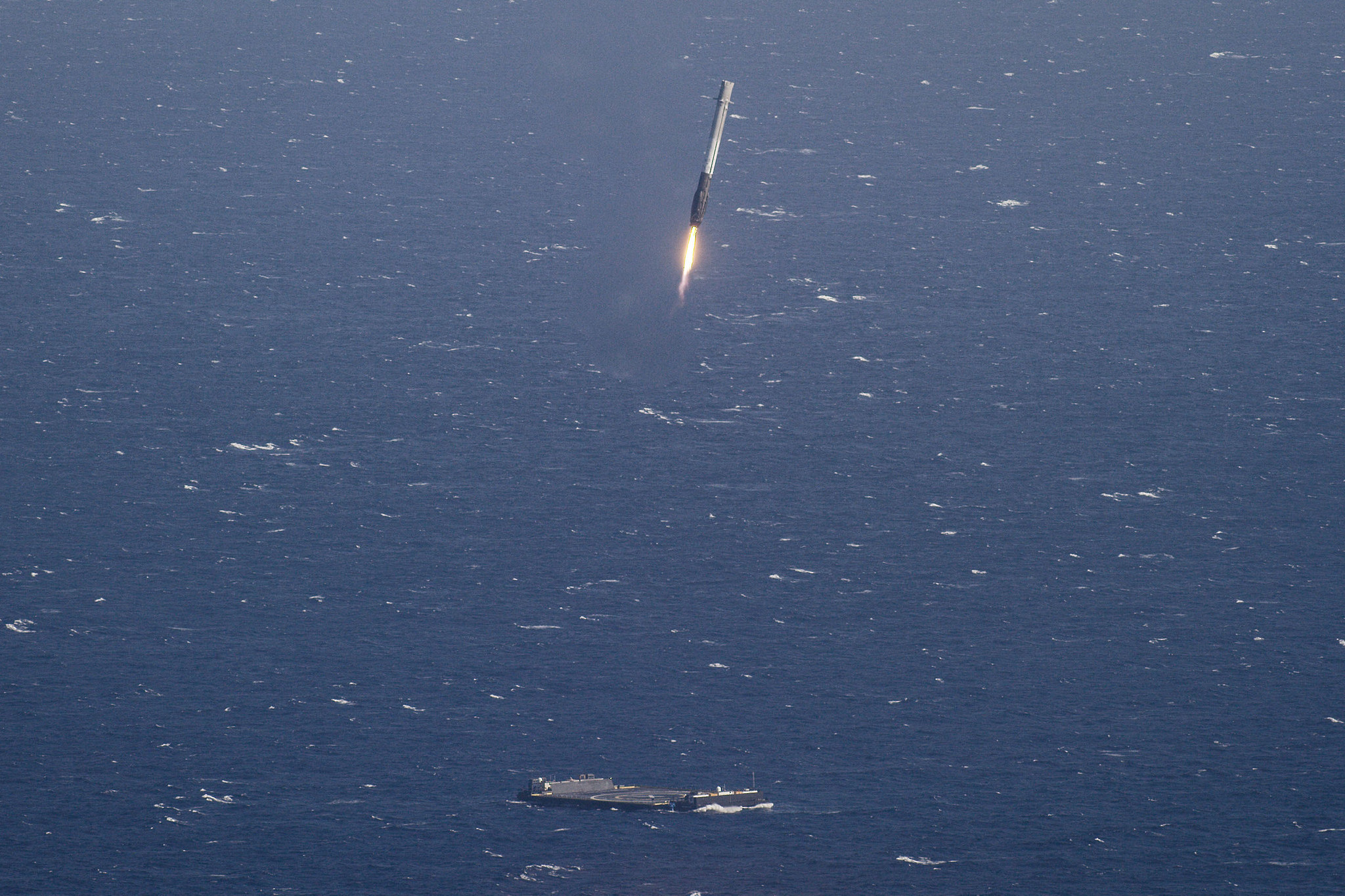Falcon 9 is a partially reusable rocket developed and operated by the American spacecraft company SpaceX. The 9 in its name refers to the nine rocket engines in the vehicle’s first stage, also called the booster. The reliability and reusability of the Falcon 9 have enabled SpaceX to launch many missions at relatively low costs. 
The Falcon 9 stands about 230 feet (70 meters) tall and weighs about 1,200,000 pounds (550,000 kilograms). The rocket uses two stages to propel a payload (cargo) into Earth orbit. The first stage generates more than 1,700,000 pounds (7,600,000 newtons) of thrust at launch. Both stages burn kerosene and liquid oxygen.
SpaceX developed the Falcon 9 as the company’s first rocket capable of carrying medium-sized payloads to orbit. The first Falcon 9 launched on June 4, 2010. SpaceX now typically completes dozens of Falcon 9 launches per year.
Falcon 9’s suffered two high-profile failures early in the rocket’s operational history. In 2015, a Falcon 9 scheduled to resupply the International Space Station (ISS) broke apart shortly after launch. A Falcon 9 exploded during a pre-launch test in 2016, destroying its payload. The Falcon 9 has not experienced a major failure since these incidents, however, and now has one of the best reliability records of any rocket.
Reusability.
The first stage of the Falcon 9 is reusable. After most of its fuel is expended in flight, the booster detaches from the second stage and falls back to Earth. Special devices called grid fins near the top of the booster deploy to steer it toward a landing pad on land or an offshore drone ship. As the booster approaches the landing site, some of its engines re-fire to slow its descent. Landing legs deploy from the base of the booster, and it lands upright on the pad or ship. 
After the first stage lands, SpaceX engineers inspect it for damage. They repair any damaged or degraded components and clean the engines. The booster is then ready to be fitted with a new second stage, refueled, and relaunched.
Initial Falcon 9 launches were completely expendable. But SpaceX studied, experimented with, and upgraded Falcon 9 hardware to enable reuse. In 2015, the first stage of a Falcon 9 landed successfully on a pad at Cape Canaveral. In 2016, a first stage made history when it landed on a drone ship in the Atlantic Ocean. SpaceX now routinely recovers and reuses Falcon 9 first stages.
Uses.
Falcon 9 rockets have delivered supplies and experiments to the International Space Station since 2012. The rockets also launch communications satellites for private companies to a variety of orbits around Earth. Since 2019, SpaceX has used Falcon 9 rockets to add to its constellation of Starlink internet satellites.
Falcon 9 rockets also launch crewed missions, using the SpaceX Crew Dragon spacecraft. Falcon 9 rockets have been transporting U.S. astronauts to the ISS since 2020. Russian cosmonauts also fly to the ISS aboard Crew Dragon spacecraft through a seat exchange program with the Soyuz launch system.
SpaceX also uses Falcon 9 rockets for space tourism missions. Space tourism is human space travel for enjoyment. In 2021, a Falcon 9 launched the company’s first such mission, known as Inspiration4. This mission was the first space tourism flight conducted by a private company to reach orbit. A second space tourism flight, named Polaris Dawn, is scheduled for 2023.
